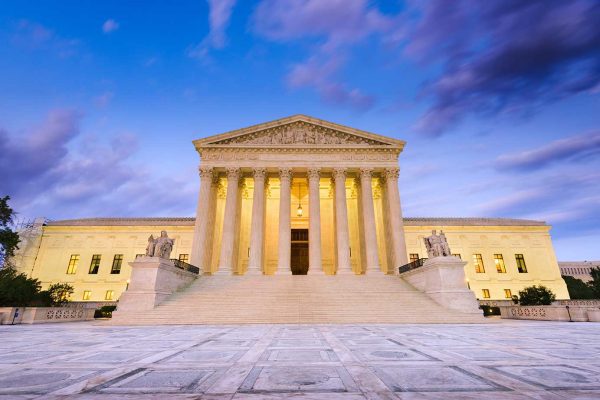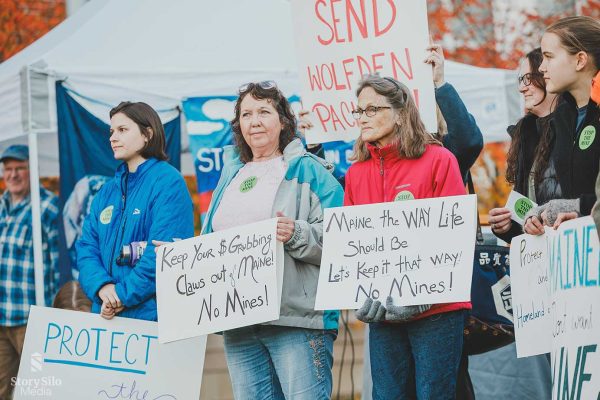
Supreme Court building
Earlier this summer, the U.S. Supreme Court issued rulings on two related cases that are expected to seriously undermine the power of federal agencies to protect clean water, healthy air, and wildlife. The cases challenged what is known as the “Chevron doctrine,” a pillar of the U.S. legal system for 40 years, which holds that courts should defer to experts in Executive Branch agencies like the U.S. Environmental Protection Agency (EPA) when they reasonably interpret ambiguous instructions from Congress.
The Supreme Court’s decisions will affect how federal courts consider the implementation of foundational environmental laws, including the Clean Water Act, Clean Air Act, and Endangered Species Act, by federal agencies through regulations, guidance, and procedures. These bedrock environmental laws have been enormously successful at cleaning up our air and water and protecting threatened species, in part because of the deference provided by the Chevron doctrine. That’s why polluting industries sought to dismantle it by bringing these cases to the Supreme Court.
The Natural Resources Council of Maine relies heavily on federal laws to carry out our mission to protect, conserve, and restore Maine’s environment. In this blog, we explore the implications of the Court’s decision on enforcement of federal regulations, the implementation of state and local policies, and the ability of communities and organizations to advocate for cleaner and safer environments.
Impact on Environmental Regulations
 Since its establishment in 1984, the Chevron doctrine has played a crucial role in empowering federal agencies like the EPA to interpret statutory provisions when enacting regulations. Under this doctrine, courts traditionally deferred to an agency’s interpretation of a statute as long as it was reasonable and the statute was ambiguous. This allowed agencies to apply their scientific expertise to complex and evolving challenges.
Since its establishment in 1984, the Chevron doctrine has played a crucial role in empowering federal agencies like the EPA to interpret statutory provisions when enacting regulations. Under this doctrine, courts traditionally deferred to an agency’s interpretation of a statute as long as it was reasonable and the statute was ambiguous. This allowed agencies to apply their scientific expertise to complex and evolving challenges.
The Supreme Court’s recent ruling could change this landscape dramatically.
With Chevron curtailed, the EPA and other federal agencies may face additional hurdles in implementing new regulations, particularly where Congress has not directly addressed the issue in question. We are likely to see more frequent legal challenges of environmental regulations by corporations and polluters, potentially wasting taxpayer dollars and causing delays in the implementation of important measures such as pollution controls and smarter land use regulations. This could slow down community-based initiatives aimed at protecting Maine’s unique ecosystems, such as its forests, lakes, and coastal areas.
It’s also important to recognize that this extreme decision by the majority of justices on the Supreme Court will go well beyond the environment, impacting many other regulations that impact the health and safety of the American people in areas like aircraft safety, food safety, workplace safety, and consumer protections against fraud.
Implementation of State Laws and Maine’s Climate Action Plan
 Changes and uncertainty at the federal level will ultimately impact progress at the state and local level. For example, Maine’s climate action plan, Maine Won’t Wait, relies heavily on local, state, and federal collaboration, particularly in areas where federal regulations intersect with state initiatives, such as emissions standards and renewable energy policies. If federal agencies face stricter judicial scrutiny based on ideology and reduced flexibility in interpreting statutes based on science, the ability of these agencies to support Maine’s climate goals could be hindered.
Changes and uncertainty at the federal level will ultimately impact progress at the state and local level. For example, Maine’s climate action plan, Maine Won’t Wait, relies heavily on local, state, and federal collaboration, particularly in areas where federal regulations intersect with state initiatives, such as emissions standards and renewable energy policies. If federal agencies face stricter judicial scrutiny based on ideology and reduced flexibility in interpreting statutes based on science, the ability of these agencies to support Maine’s climate goals could be hindered.
Meeting Maine’s climate goals also hinges on the ability to adapt to new scientific findings and emerging climate risks. A more constrained EPA might struggle to implement adaptive regulations swiftly, limiting Maine’s ability to respond effectively to unexpected climate impacts, such as more severe coastal erosion or changes in fisheries.
Impact on Organizational Advocacy and Community Engagement
With a potential reduction in federal oversight and support, local governments and regional authorities in Maine might need to take on greater responsibility for interpreting and enforcing climate-related policies. This additional burden could increase cost to local taxpayers and variability in how environmental policies are implemented, potentially creating disparities across the state, or reinforcing old ones. It could also increase the burden on Maine’s citizen Legislature to respond with stronger state laws to make up for the weaker federal ones.
Environmental justice communities, which include low-income neighborhoods and communities of color, often rely on federal agencies to enforce regulations that protect vulnerable populations and likely will face new challenges because of this ruling. Reduced agency discretion could hinder their ability to implement tailored solutions addressing specific community needs, making it more difficult for these groups to secure protections against environmental hazards.
This makes efforts by NRCM and other organizations to build new and stronger coalitions to ensure environmental justice and equity all the more important.
Moving Forward
 The decision by a majority of justices on the Supreme Court to give into pressure from polluting corporations and overturn the Chevron doctrine introduces new challenges for our collaborative work to protect clean air and water for all Americans.
The decision by a majority of justices on the Supreme Court to give into pressure from polluting corporations and overturn the Chevron doctrine introduces new challenges for our collaborative work to protect clean air and water for all Americans.
Navigating this new era in the American legal landscape will require us to continued collaborating and adapting to ensure the continued protection of Maine’s environment and communities. As we’ve always done, NRCM will work together with Maine people to stand up to polluters who want to profit off our state’s abundant natural resources, and we’ll fight for stronger environmental laws to build a brighter future for all Mainers.
—Anya Fetcher, NRCM Federal Policy Advocate










Leave a Reply